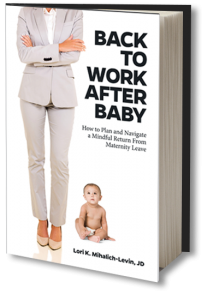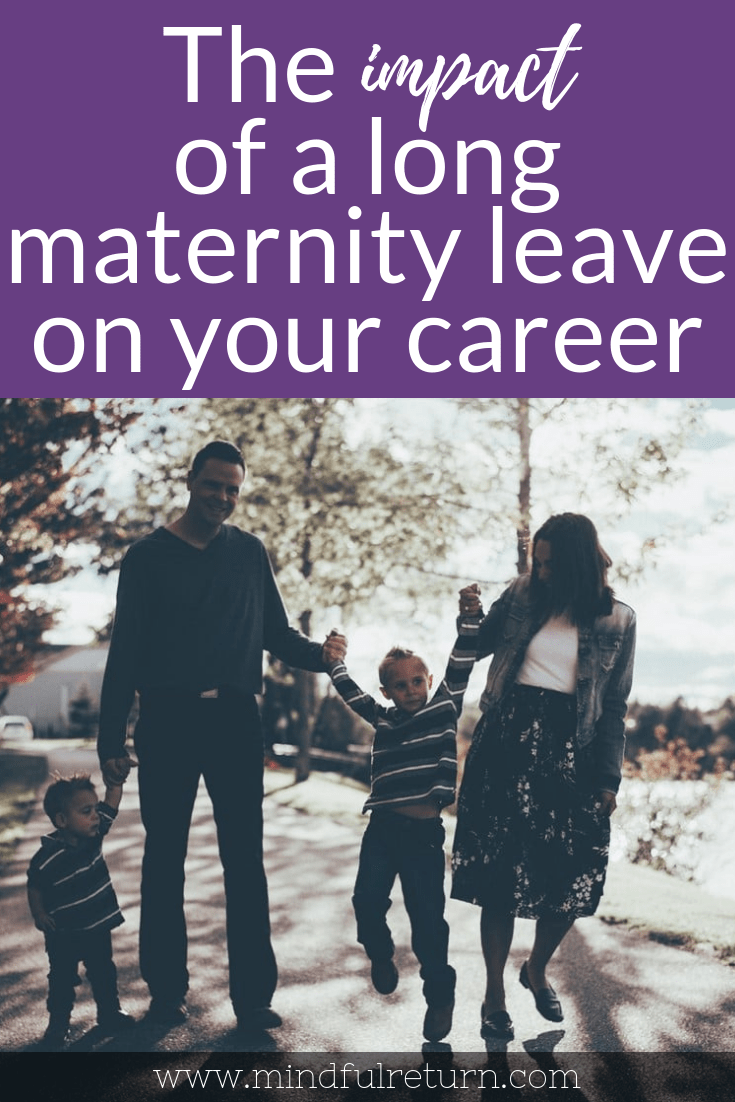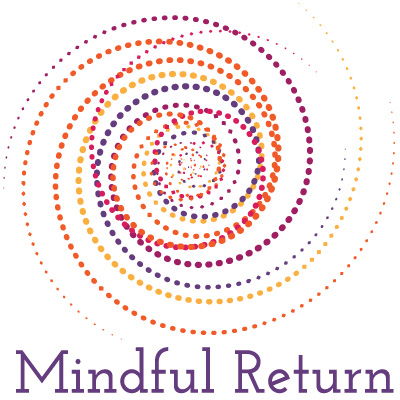 I recently had the good fortune to meet a Canadian mama, Shauna Cole, who is a compatriot in the world of helping new moms manage their careers and babies at the same time. Her experience with a really long maternity leave really intrigued me, especially given many of us in the U.S. are engaged in an enduring battle to get longer paid maternity leaves.
I recently had the good fortune to meet a Canadian mama, Shauna Cole, who is a compatriot in the world of helping new moms manage their careers and babies at the same time. Her experience with a really long maternity leave really intrigued me, especially given many of us in the U.S. are engaged in an enduring battle to get longer paid maternity leaves.
Reading about Shauna’s experiences makes me even more interested in learning how all countries can do this leave-and-return thing better. And in learning more about the keep-in-touch programs discussed in the HBR article she cites below.
*************************************************************************
Q: Shauna, please tell us a little bit about yourself and your family.
A: I help people use change to achieve their career goals. I live in New Brunswick, Canada in a house filled with boys. You can find me and my partner, Shawn (yes we are seriously Shauna and Shawn), and our two little dudes at the playground, throwing a backyard party, or at nanny and grampy’s house.
I work with clients through all types of career transition and teach courses on Change Management and Leadership at the University of New Brunswick.
I’ve got a special passion for helping women through maternity leave transitions, because my experience was such a challenge. I’ve used that experience, and the experiences of many clients, to create The Method To Your Mat Leave, an online course to help women reclaim career control, so they can get back to the business of enjoying their time with baby.
Q: What are the laws and policies that govern maternity leave where you live?
A: In Canada, we can take up to 76 weeks’ leave to care for a new baby.
This combines two types of leaves:
- Maternity Leave (only mom can take) – 15 Weeks
- Parental Leave (mom or dad can take) — (A) STANDARD Parental – 37 weeks; or (B) EXTENDED Parental – 61 weeks.
The benefits are administered through the Employment Insurance Program. So, it’s kind of like being on a specific type of unemployment. Payments are issued through the Employment Insurance Program that most working Canadians pay into over the years.
At the end of the leave period, the employee is guaranteed an equal (not the exact same) position.
Q: What about paternity leave?
A: Parents can share the 35 weeks of paid parental leave however they want. Plus, dads get an additional five weeks leave, just for them, with the same guarantee of an equal position.
Q: What are the benefits / upsides to these policies?
A: Having the option to stay home with your child is the clear benefit. This allows mom and dad the time and space to adapt to their new family, without the added pressure of getting to work in the morning (or fitting into work clothes post-partum). There is time and space to form new friendships and regain some of mom’s pre-baby self.
Q: What are the downsides?
A: Long Mat Leave Takes a Toll on Your Career
As the Harvard Business Review recently discussed, being away from work for a lengthy period of time takes a toll on your career. There’s a feeling of being ‘out of control’. Plus, you’re not guaranteed the same job upon your return. The awareness around this piece seems fairly low.
Many professional moms describe their careers as being significantly set back because of the time away from work. The time away also means missed promotions and project opportunities. According to CERIC Canada, only 4% of Canadian Moms report that maternity leave positively impacts their careers.
It Can Hurt Financially
Some employers ‘top up’ the Employment Insurance benefits available through the government for part, or all, of the leave to match the employee’s salary, or close to it. This is at the discretion of the employer and subject to its benefits package.
When there’s no top up, the financial implications are tough. The basic rate for calculating Employment Insurance maternity benefits is 55% of your average weekly insurable earnings, up to a maximum amount of $51,700. This means that you can receive a maximum amount of $547 per week on the STANDARD option.
For the EXTENDED leave, parents need to stretch out their Employment Insurance benefits, opting to receive a lower rate of 33% of average weekly earnings.
These dollar amounts can be tough to swallow, especially if you held a senior role before going on leave, where the base rate is significantly high than the maximum insurable amount of $51,700.
Q: What’s your own personal maternity leave story?
A: My first maternity leave basically ended my 10+ year corporate career. I opted for a 12-month leave to stay home with my first son Jayden. When I returned to work, my job had basically been absorbed into my department. There was not a lot of responsibility left for me. I lost my budget responsibilities and direct reports. It was an extremely difficult time, because I felt I wasn’t adding value at work. The stress of this was compounded by leaving my son at daycare. After several months of this struggle, the right move for me and my family was to rethink my career.
Q: What are the most common struggles where you live, for women transitioning back to work after maternity leave?
A: Maternity leave is not closely managed, in a lot of cases, like other types of career transitions. This leaves women in a vulnerable spot with little direction, clarity and support for a successful return to work.
Q: What helps women most in working through these struggles?
A: Women need to take ownership of their careers and their own transition experience. A positive way to do this is by joining programs that offer an intentional process and systematic framework to work through. You also get the support of a community going through some of the same thing.
Connecting with other women going through the same experiences helps a new mom acknowledge the change she’s going through, so she can start to reclaim control over her professional goals, her experience at home and get back to the business of enjoying leave like a mother without the stress of so many unknowns.
 Shauna Cole is a Chartered Human Resources Professional (CPHR), Senior Certified Human Resources Professional (SHMR-SCP) and MBA with a passion for career transition and her house filled with boys. Shauna is the Founder of The Method To Your Mat Leave, an online Program launching in January 2019. The Program helps women get back to the business of enjoying leave like a Mother. This is the first of a series of programs that will support new parents reclaim career control. Find out more about Shauna at http://www.shaunacole.com.
Shauna Cole is a Chartered Human Resources Professional (CPHR), Senior Certified Human Resources Professional (SHMR-SCP) and MBA with a passion for career transition and her house filled with boys. Shauna is the Founder of The Method To Your Mat Leave, an online Program launching in January 2019. The Program helps women get back to the business of enjoying leave like a Mother. This is the first of a series of programs that will support new parents reclaim career control. Find out more about Shauna at http://www.shaunacole.com.
 If you need more help getting your head in a better place to return to work after maternity leave, join us for the next session of Mindful Return.
If you need more help getting your head in a better place to return to work after maternity leave, join us for the next session of Mindful Return.
Want more practical tips on working parenthood? Check out my book, Back to Work After Baby: How to Plan and Navigate a Mindful Return from Maternity Leave.


